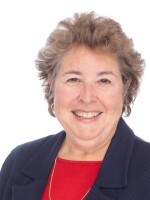AUDIE CORNISH, HOST:
Under the Affordable Care Act, millions of Americans are expected to get health insurance, but some critics wonder how the nation will pay for so many new patients. Those who crafted the law say it's possible to care for more people at less cost if medical care is better organized. Sandy Hausman reports on what that might look like.
SANDY HAUSMAN, BYLINE: St. Francis Family Medicine near Richmond, Virginia, is like many medical practices in America, evolving into a medical home where patients will come first for all their care.
JONETTA ARMSTRONG: So what's the reason for your visit today?
UNIDENTIFIED MAN: I'm here for a complete physical.
ARMSTRONG: OK.
HAUSMAN: This model relies on a team approach, with someone like licensed practical nurse Jonetta Armstrong doing basic jobs.
ARMSTRONG: 121 over 82, temp is 98.2 and pulse is 59. Looks good. Thank you so much...
HAUSMAN: A physician's assistant or a registered nurse coordinates the patient's care over time, making sure they're taking medicines properly, getting timely preventive care and that no unnecessary tests are done. Physicians like Rupen Amin do the most challenging job: making a diagnosis and crafting a strategy for care.
DR. RUPEN AMIN: You have more time to build a relationship with your patient and make those decisions that you need to without having to worry about the small things.
HAUSMAN: Medical homes use computerized recordkeeping to better track patients and to watch for trends that might signal the need for new treatments. All of this sounds expensive, and at first it may be, but two large-scale programs suggest medical homes may save a great deal of money. The first of these demonstration projects began seven years ago in Richmond. It's called the Virginia Coordinated Care for the Uninsured Program, or VCC. Linda Ford enrolled after coming down with a miserable case of shingles.
LINDA FORD: I was in tremendous amount of pain and did not know what was going on with me.
HAUSMAN: Ford wanted to see a doctor, but she had no insurance. By law, hospital emergency rooms must provide care for the uninsured, so Linda ended up at the university's medical center, home base for VCC. Through the program, she was able to see a primary care doctor at no charge. He prescribed medication to help prevent a recurrence of shingles and began treating her for high blood pressure, something she knows is important.
FORD: Because if you don't treat high blood pressure, you sometimes have a heart attack and die.
HAUSMAN: Today, Virginia Commonwealth says it's enrolled more than 26,000 people, and health system vice president Sheryl Garland says the results are encouraging.
SHERYL GARLAND: Our patients had lower utilization of the emergency room, fewer inpatient admissions, and the overall cost of care went down.
HAUSMAN: At first, it cost about $8,000 a year on average to care for a patient, but for those who stayed in the program at least three years, costs dropped by 50 percent. In California, statisticians saw a similar trend in the Healthy San Francisco program. It started six years ago, funded by the city, county, local employers and donors. Thirty-seven clinics and medical practices provided care at little or no cost to about 49,000 people who were allowed to choose the medical home that appealed to them.
TANGERINE BRIGHAM: And that's so important because we really want to ensure continuity of care and relationship building with providers in that medical home.
HAUSMAN: Program director Tangerine Brigham says Healthy San Francisco saw costs decline an average of $540 per patient per year. Many of the patients have chronic conditions - diabetes, high blood pressure, congestive heart failure or asthma - but Brigham says seeing a medical professional on a regular basis keeps them out of the hospital and emergency room, expensive places for care.
BRIGHAM: When you get individuals with chronic conditions into stable care, where they really are able to maintain their medication regimen, we can do group visits with them, all of those things really do ultimately contribute to improved health.
HAUSMAN: And the program gets good reviews. An independent survey showed 94 percent of Healthy San Francisco's patients were satisfied with their care. VCC's Sheryl Garland hopes to collaborate with Healthy San Francisco on future studies and to release updated statistics on Virginia Coordinated Care this summer. For NPR News, I'm Sandy Hausman in Richmond.
CORNISH: This story is part of a partnership that includes NPR, Virginia Public Radio and Kaiser Health News. Transcript provided by NPR, Copyright NPR.


